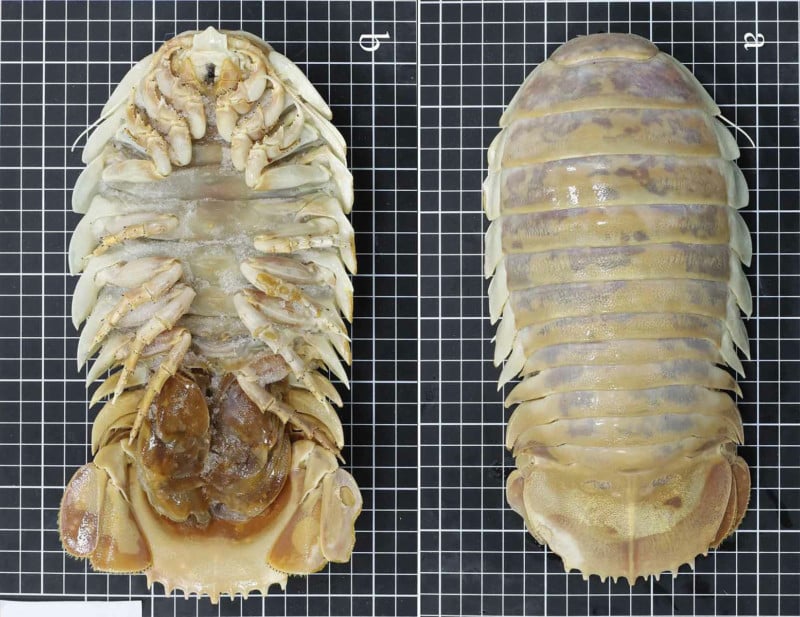Photos of an Newly Discovered Species of Large Deep-Sea Isopod

Scientists have recently trapped and photographed a giant deep-sea isopod — a giant, underwater cousin of the pillbug — off the coast of Mexico and after studying it closely, realized that it was an entirely new species.
The giant isopod is often seen as a singular creature, but there are actually more than 20 species of the large underwater crustaceans. Distantly related to shrimp and crab, the creatures are abundant in the Atlantic, Pacific, and Indian Oceans. Despite different species existing under this game genus Bathynomus, the creatures look very similar and are thus often miscategorized.
“Deep sea isopods belong to the same group that contains the terrestrial isopods known variously as woodlice, pillbugs, and roly polys, which feed on decaying matter and are likely familiar to anyone who has lifted up a rock or dug around in the garden,” a news release on the finding says.
“Indeed, they look quite similar but for their extraordinary size—the largest of them grow to nearly 50 centimeters. And, just like woodlouse, although they perhaps look a little scary, they are completely harmless to humans.”
These deep-sea creatures have a plated exoskeleton like their terrestrial cousins but also have large dorsal “fins” that they use to move in the water. They are also much larger than the small terrestrial pillbugs, which some speculate is an adaptation that comes as a result of their extremely dark habitat.
A group of scientists is adding yet another species to the diverse genus with the discovery of what they call Bathynomus yucatanensis, Gizmodo reports. This subspecies can grow up to 1.64 feet long and was found off the coast of Mexico, as explained in the team’s research paper that has been published in the Journal of Natural History.
“We originally wanted to explore the species identity and morphological characteristics of 10 Bathynomus individuals taken from the Pratas Islands,” the scientists explain.
In order to do so, they pulled multiple specimens from an aquarium in Japan to use for comparison.
“One species was B. giganteus and the other proved to be an undescribed species. Using molecular biology methods to analyze cytochrome c oxidase I (COI) and 16S rRNA sequences, we confirmed the relationship between individuals.”
The result was a new western North Atlantic species of Bathynomus, which only looks markedly different from others in the genus after closely examining its underside. It also is a slightly different shade of yellow than its nearer relatives, which are more translucent white, Gizmodo notes.
These visible differences are not immediately apparent, but they clearly do exist and they would not have been found if not for the regular investigation into a creature that most would likely care not to think about at all.
Multiple photo examples in the full study show the subtle differences among a set of these deep sea isopods, which can be read in the Journal of Natural History.